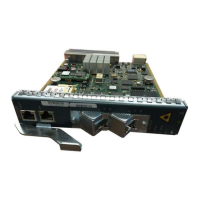Corporate Headquarters:
© 2006 Cisco Systems, Inc. All rights reserved.
Cisco Systems, Inc., 170 West Tasman Drive, San Jose, CA 95134-1706 USA
Installing the CTX2500 Card in the
Cisco ONS 15310-MA
Product Names: 15310-CTX-2500-K9
This document provides a card description, specifications, and an installation procedure for the
Cisco ONS 15310-MA CTX2500 card. As appropriate use this document in conjunction with the
Cisco ONS 15310-CL and Cisco ONS 15310-MA Procedure Guide, the Cisco ONS 15310-CL and
Cisco ONS 15310-MA Reference Manual, and the Cisco ONS 15310-CL and Cisco ONS 15310-MA
Troubleshooting Guide when working with CTX2500 cards.
This document contains the following sections:
• CTX2500 Card Description, page 1
• CTX2500 Card Specifications, page 3
• Install the CTX2500 Cards, page 5
• Related Documentation, page 7
• Obtaining Documentation, page 7
• Obtaining Technical Assistance, page 8
CTX2500 Card Description
The CTX2500 card, for use with the ONS 15310-MA, is a fully nonblocking cross-connect card that
operates in either a simplex or duplex (redundant) configuration. It performs system initialization,
provisioning, alarm reporting, maintenance, diagnostics, IP address detection/resolution, SONET DCC
termination, system fault detection, and cross-connect maintenance and management for the
ONS 15310-MA. The card also provides the circuitry for the OC-3/OC-12/OC-48 interfaces, and
ensures that the system maintains timing with SMC stability.
Caution If the system loses power or the CTX2500 card is reset, you must reset the ONS 15310-MA clock unless
the node has been previously provisioned to use Simple Network Time Protocol (SNTP) to update the
clock over the LAN.

